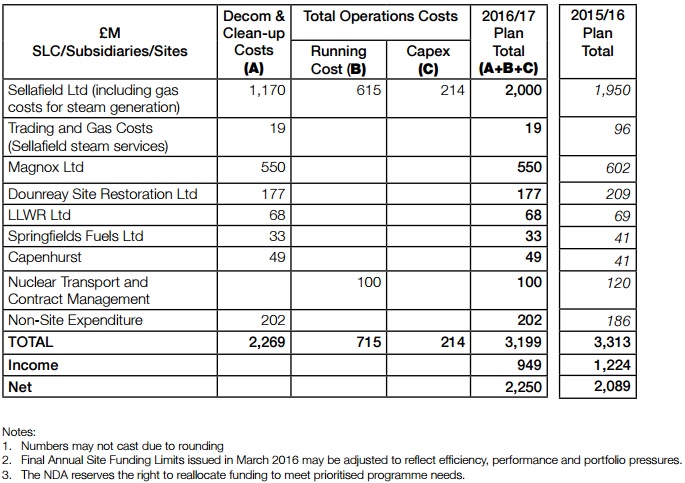US set for 80-year lifespans; South Africa invites new plant bids
Nuclear power news you need to know.

US issues draft guidelines for 80-year lifespans
The US Nuclear Regulatory Commission (NRC) has launched a public consultation on new guidelines to extend nuclear plant lifespans from 60 years to 80 years.
The NRC expects to receive the first application for license renewals beyond 60 years in around 2019.
The new lifespan extension guidelines are to be presented at NRC headquarters in Rockville, Maryland, on January 21-22 and February 23, it said. The rules will be based on existing guidelines for license renewals and companies will have until February 29 to comment.
U.S. commercial nuclear power reactors are initially licensed for 40 years of operation, and the licenses can be renewed for a period of 20 years.
To date, the NRC has renewed the licenses of 81 reactors to operate for up to 60 years (two of those reactors have since been shut down).
BKW files Switzerland's first decommissioning application
Swiss power utility BKW has submitted the country's first nuclear power plant decommissioning application, for its 373 MW Muehleberg plant.
The plant, situated in western Switzerland, is scheduled to close by December 2019.
Following a review by the nuclear regulatory authorities, the application will be put to a public consultation in April 2016, the company said in a statement December 18.
The application consists of the conceptual framework for the main decommissioning project, as well as sub-reports on accident analyses, emergency protection measures, an environmental impact report and a security report.
"Experience from abroad shows that legal processes are more likely to considerably delay the decommissioning process than technical challenges. By choosing this approach, BKW has consciously taken account of the time factor," the company said.
The Muehleberg outlook:
• April 2016: Public consultation of the decommissioning application
• April 2016: Information events on the decommissioning in the Muehleberg region.
• August 2016: Annual maintenance inspection of the plant.
UK decommissioning body eases back spending
The U.K.'s Nuclear Decommissioning Authority published January 5 its draft Strategy and Business Plan for 2016 to 2019, aligning its strategy with its short and long-term outlooks on the back of the government's latest spending plan.
NDA, a state-funded body, plans to spend a total of 3.2 billion pounds ($4.7 billion) in financial year 2016/17, down slightly from the 3.3 billion pounds spent in 2015/16.
NDA Planned Income and Expenditure Summary

Source: NDA
A market consultation on the Business Plan runs until February 15 and all responses will be considered before the NDA publishes the plan by the end of March.
South Africa agrees to receive nuclear build proposals
South Africa's Cabinet has approved the issue of a Request for Proposal (RFP) by the Department of Energy for its nuclear build program of 9.6 GW.
The final funding model for the build program will take into account the market responses to the RFP.
Proposals for the funding model will be submitted to Energy Security Cabinet Sub-Committee for recommendation before being considered by Cabinet for final approval and implementation, the Department of Energy said in a statement December 26.
"Any decision to proceed further with a Nuclear New Build Program will therefore only take place after the RFP process has been completed and a final funding model has been developed, and then referred back to Cabinet for consideration and approval," the state department said.
In June 2015, South Africa's Cabinet agreed in principle to proceed with developing a procurement program for what would be the country's first nuclear power plants since two reactors were commissoned in the 1980's.
Global nuclear capacity grows on China surge
Global nuclear generation capacity grew by around 5 GW in 2015, as 10 new reactors began supplying electricity and eight were permanently shut down, according to World Nuclear Association (WNA) data.
"As of 31 December 2015, there were 439 reactors in operation, with a total 382.2 GW(e). For comparison, at the start of 2015 there were 437 operable reactors and a total nuclear generating capacity of some 377.7 GW(e)," WNA said in a statement January 4. Of the 10 new reactors, eight were in China, while one reactor came online in Russia and one was started in South Korea. Uprates saw a further 484 MW added, WNA said.
Terrestrial secures funds for molten salt reactor development
Canada's Terrestrial Energy has raised CA$10 million ($7.1 million) in venture capital funding for the development of its Integral Molten Salt Reactor (IMSR) technology.
“Funds will be used to support the company’s pre-construction and pre-licensing engineering, and to support further engagement with industry and nuclear regulators,” Simon Irish, CEO of Terrestrial Energy, said in a company statement January 8.
Terrestrial Energy plans to build a commercial demonstration plant in Canada before broader deployment in North America and beyond.
The developer says its IMSR plants will offer reliable power solutions for electricity production, both on- and off-grid, and also energy for industrial process heat generation.
The IMSR can be deployed to global markets "in the next decade," the firm said.
